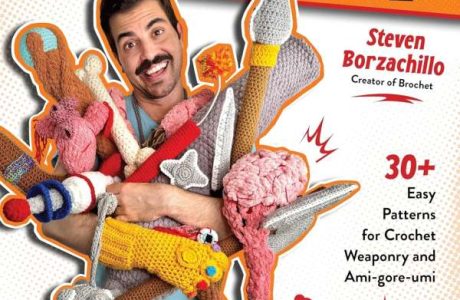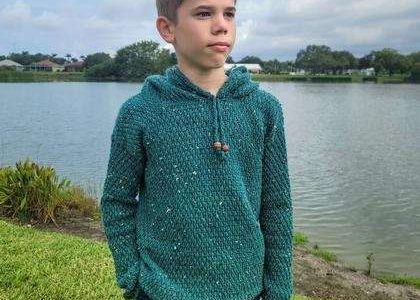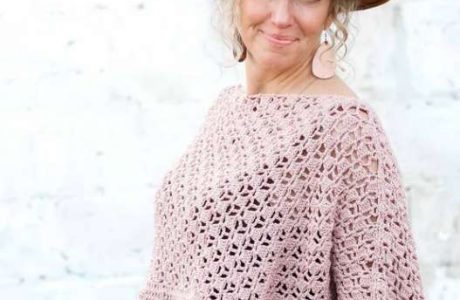
The winning entry for Simply Sweet Crochet is this one – not because it’s so long – but because it’s detailed and has great information that I’ve used with my students just the way the entry described.
I used the analogy of building a wall made of Greek columns and capstones to explain the idea of the stitches and how to build and link them to help an absolute beginner (learning ch, sc, dc, turning, working in rows):
The loop on your hook is your capstone. It’s your “stitch”, and it’s the last thing you’ll do to each column you build, even though it’s the first thing that happens: you won’t lay that capstone until you are finished building your column, and as soon as you lay the capstone on a column, the capstone for your next column IS ALWAYS ALREADY ON YOUR HOOK. You actually lay a capstone down by picking up a new one.
You are building a wall made of columns, each topped with a capstone. Each row is a new wall, built right onto the capstones of the wall before. Your capstones are linked to each other, seen by looking at the top of your stitches. Each column is linked to the capstone of the column underneath. Capstones can be laid without columns, either in mid-air (chain stitches) or anchored to the column below (slip stitch).
No matter what kind of column you build or how short or tall it is, the last thing you’re going to do to each column is add the capstone.
Everything you do before you lay the capstone builds your column, and not until you lay that capstone have you really gone anywhere.
Because your capstone is linked to the one before, and because it is already on your hook, you have to build each column from the height you want the capstone to lay. That can mean laying capstone-only chain stitches at the beginning of a new wall (row) to get up to the height you want your new column. Then your wall is built one column at a time like this: 1. gather your building material (yarn over indicated number of times), 2. anchor your column to the one underneath (insert hook into both loops/flo/blo), 3. build your column (yarn over/pull through indicated number of times), and 4. lay your capstone (pull through final loop/loops).
I used two partially crocheted gauge squares with four and a half rows already completed, one for me and one for her. Hers had a hook still in the loop ready to make the next stitch, and I stretched and turned and pointed and stitched mine as I talked. I deliberately did not start “at the beginning” with slip knots and foundation chains, which can be more confusing. After we discussed the anatomy of the stitches and how they are built and linked to each other, then we went on to how to start and finish a row, and THEN how to start and finish a square.
Good luck, JD!
zip code 32277
LORELEI – Please email me (crochet@craftgossip.com) your snail mail information so I can get the book in the mail to you.
Thanks to all who entered. I got a lot of great information from all the entries. Since I anticipated that, I have selected two other second place winners. I will be sending each of them a copy of a new crochet book. Each person should email me as soon as s/he can with snail mail particulars. crochet at craftgossip dot com Those two winners are:
Beckie Rhoads Boraten and Misty Bowman
I’ll keep you all posted on how the crochet classes go.




Leave a Reply